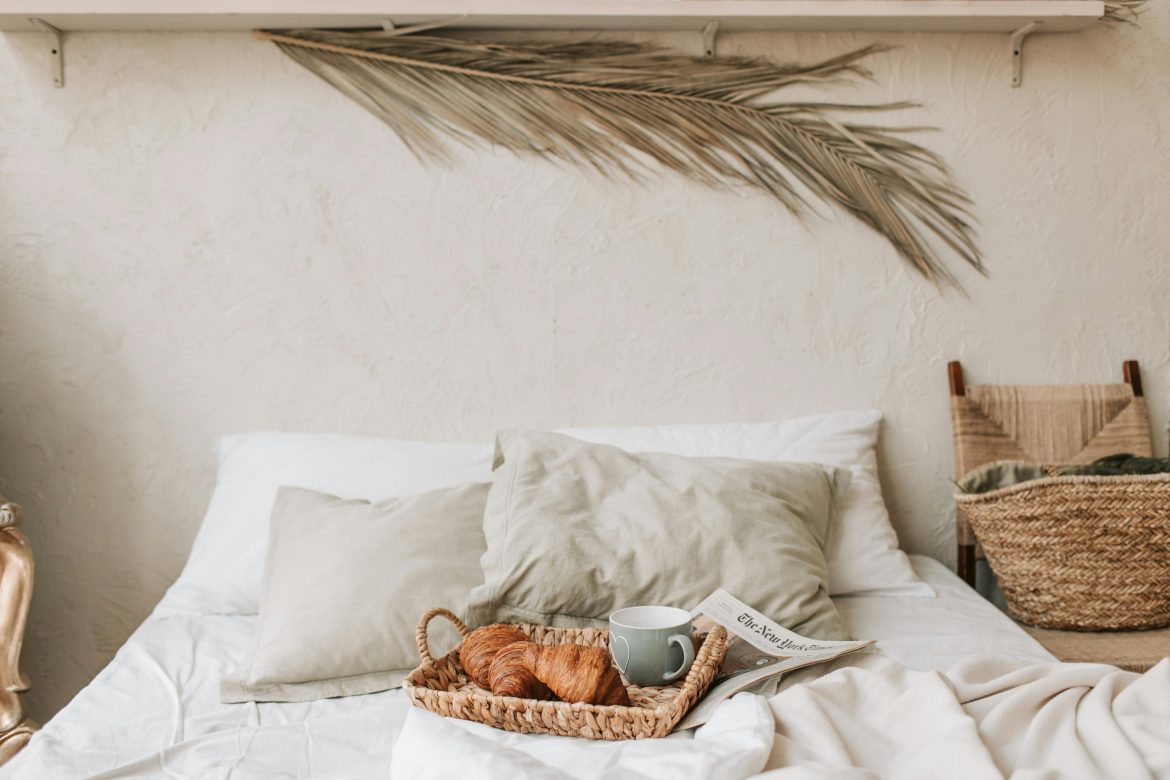Minimalism has long been praised for its calm, clutter-free approach to interiors, but the traditional version can sometimes feel a little stark and cold. Warm minimalism, on the other hand, offers all the same clutter-free serenity, but more welcoming tones, soft edges and earthy hues. It’s the perfect middle ground if you’re craving a calmer, warmer home.
ALSO SEE: 8 unique ways to decorate your walls without repainting
A shift from stark to serene
Traditional minimalist design is often associated with clinical whites, hard lines, and sharp edges. While visually appealing, such spaces can sometimes lack the warmth and comfort we crave at the end of a long day. Warm minimalism reimagines the philosophy, drawing inspiration from nature, modernist architecture, and our growing desire for interiors that both soothe and inspire.
Instead of banishing personality or cosiness, warm minimalism embraces them, just with intention. It’s not about stripping your space bare; it’s about making conscious decisions about what stays and why. A vintage wooden bench, a tactile wool rug, or a well-placed artwork can all coexist in a warm minimalist room, as long as they serve a purpose and bring joy.

Pexels
Earthy tones and rich textures
The warm minimalist palette centres on natural tones that evoke calm and comfort. Think creamy whites, soft beiges, biscuit hues, terracotta, rust, and sage green—colours that draw from the outdoors and invite a sense of balance. These hues are often paired with materials like oak, leather, rattan, linen, and stone to build a layered, sensory experience.
Texture is key in a warm minimalist space. While colours may be subdued, the tactile quality of materials keeps things interesting. A soft linen curtain diffusing sunlight, a rough-hewn wooden coffee table, or a buttery leather chair add depth and warmth without clutter. As interior designer Rukmini Patel explains, even small details—like a thick Berber rug or wicker accents—can transform a cold space into one that feels grounded and lived-in.
Bringing the outdoors in

Pexels
One of the defining features of warm minimalism is its connection to the natural world. This doesn’t mean filling your home with plants—although a few thoughtfully placed ones never hurt—but rather finding ways to blur the boundary between indoors and out. Large windows, sheer curtains, earthy palettes, and raw materials all work together to create a space that feels rooted in nature.
Architects like James Gorst and David Montalba have championed this approach in their projects, using floor-to-ceiling windows, natural materials, and outdoor views to soften modern interiors. Even in smaller homes or urban flats, subtle nods to nature—like a stone countertop, a wood-panelled wall, or sunlight filtering through gauzy blinds—can go a long way.
Purposeful decoration
Warm minimalism invites personality, but it’s not a free-for-all. Every object has a reason to be there, whether it’s a treasured heirloom, a hand-thrown vase, or a framed photograph that sparks joy. Instead of hiding everything away, the style allows space for meaningful pieces, arranged with care.
It’s about balance. Display shelves can add interest and order, especially when items are grouped by shape, tone or function. Designers like Betsy Smith suggest incorporating colour through select pieces, perhaps a mustard sofa or olive-toned dining chairs, rather than overwhelming a room with bold patterns or statement walls.
Vintage furniture also plays a vital role, offering a sense of familiarity and character. A mid-century chair or reclaimed wooden table brings warmth and tells a story, all while staying within the minimalist ethos of quality over quantity.
Lighting and atmosphere
No warm minimalist space is complete without careful attention to lighting. Natural light is ideal, soft and ever-changing, but when the sun sets, ambient lighting steps in. Lamps with woven shades, warm-toned bulbs, and layered lighting setups create a glow that transforms even the simplest room into a sanctuary.
Avoid cold, stark lighting; instead, opt for brass, ceramic, or wood fixtures. Wall sconces, pendant lights, and floor lamps in soft shapes can all add depth and movement, particularly when they cast light through textured materials.
A style for mindful living
At its heart, warm minimalism is not just a design trend—it’s a way of life. It encourages us to slow down, be intentional, and find beauty in simplicity. In an age of overconsumption and visual noise, creating a space that feels restful, tactile, and meaningful is a radical act of care.
Rather than filling every corner or following every passing trend, warm minimalism asks you to focus on what truly matters: comfort, clarity, and connection to your space, your things, and yourself.
ALSO SEE:
Featured Image: Pexels

